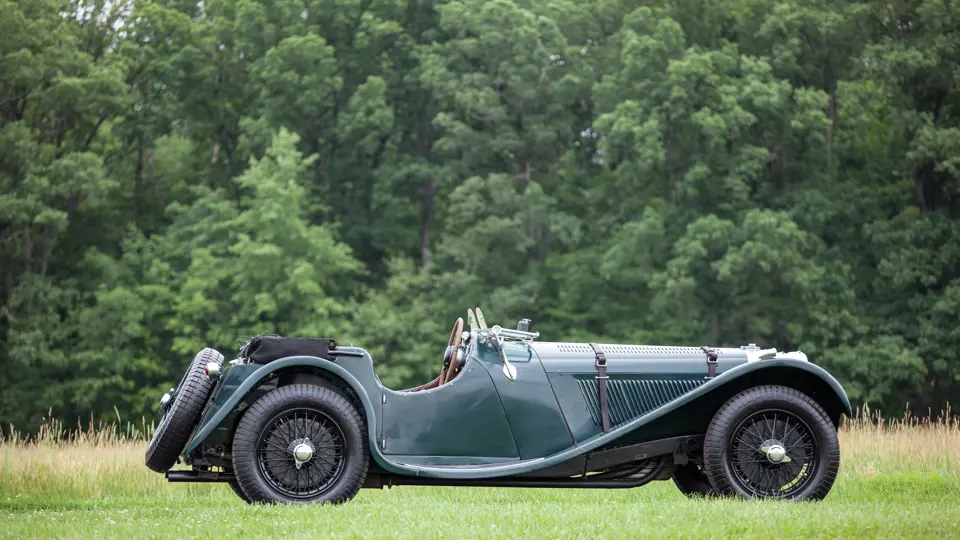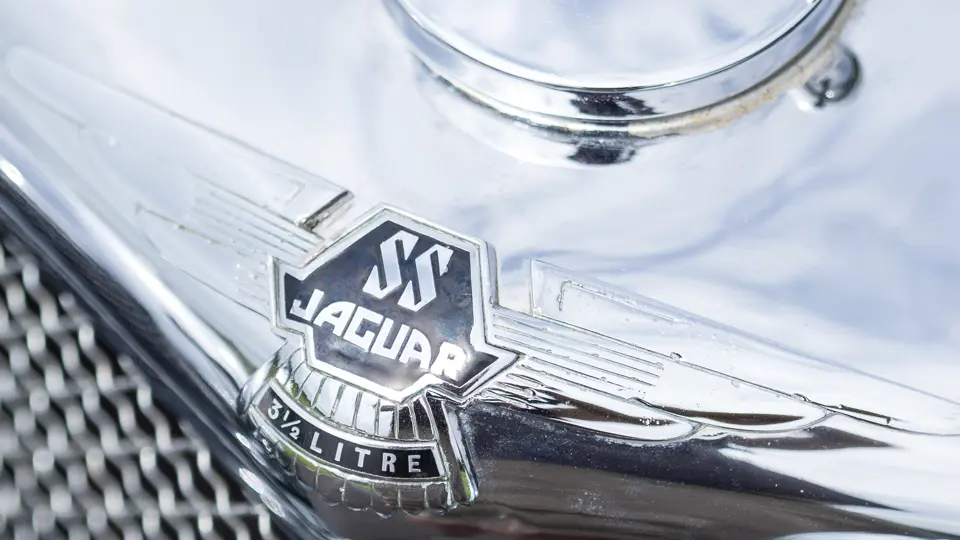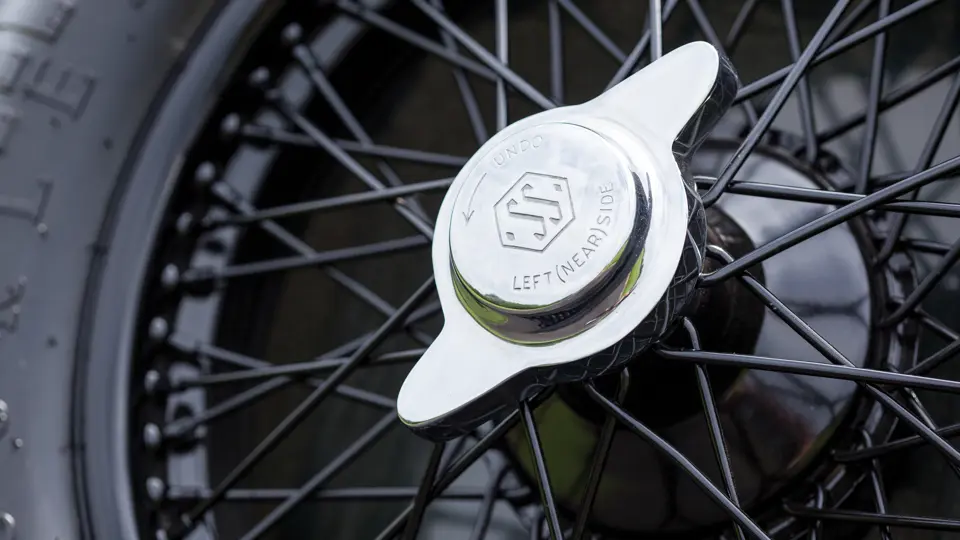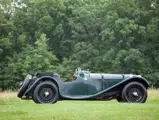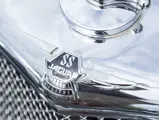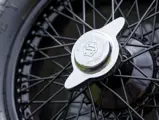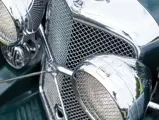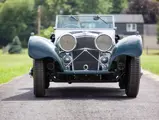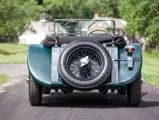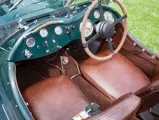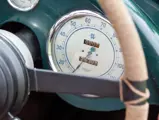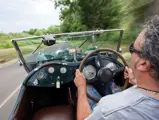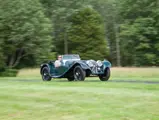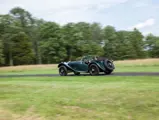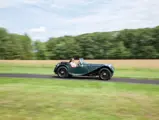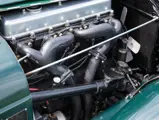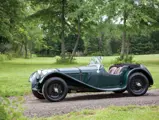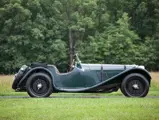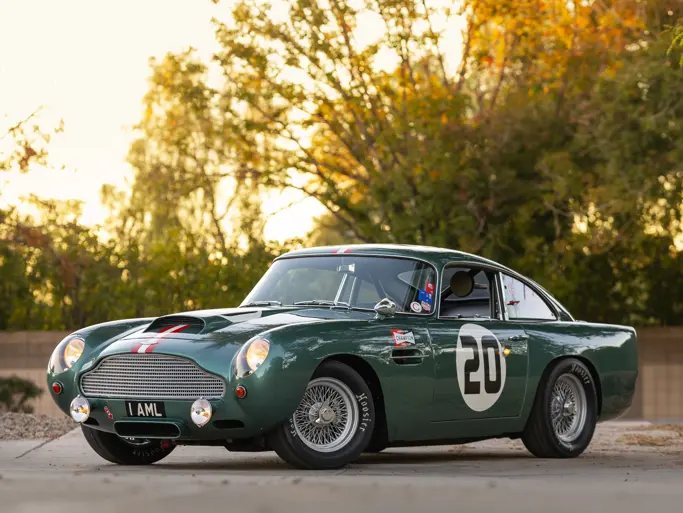
1938 SS 100 Jaguar 3½-Litre Roadster
{{lr.item.text}}
$583,000 USD | Sold
{{bidding.lot.reserveStatusFormatted}}
- Desirable 3½-Litre version; one of 118 built
- Factory-issued competition-specification engine with a bronze cylinder head
- Formerly owned by Malcolm Pray
- Multiple award winner and concours poster car
- Includes Jaguar Daimler Heritage Trust Certificate
- Jaguar’s most esteemed pre-war roadster
125 bhp, 3,485 cc overhead-valve inline six-cylinder engine with a competition head, four-speed manual transmission, solid front axle and live rear axle with semi-elliptical leaf springs, and four-wheel drum brakes. Wheelbase: 104 in.
Originally founded by Sir William Lyons in 1922 to build and market his motorcycle sidecars (Swallow Sidecars), by 1930, SS Cars had grown into Britain’s premier independent coachbuilder of mass-market automobiles.
Debuting at the 1931 Olympia Motor Show, the SS1 Sports Saloon begged comparisons to more expensive alternatives from Bentley and Alvis. Given the company’s aspirations to move into sportier realms, there was little surprise when the model line was widened in 1935 to include a two-seat roadster, dubbed the SS 90. Styled by company co-founder William Lyons (later to become Sir William), it featured the sweeping, curvaceous fenders, long front deck, and short rear scuttle that became Jaguar hallmarks. As such, the SS 90 was the first of the company’s famous sporting roadsters and the first to advertise the top speed in the model name.
While the SS 90 had the aesthetics and open-air sensibilities to be successful, the model’s Standard-based engine still left much to be desired in terms of performance. This shortcoming was soon addressed with the late-1935 debut of the Jaguar (the company’s first use of its future name), which included a new 2½-liter engine that had been fashioned from the original Standard mill by engineer Harry Weslake. In the sporting roadster, the updated engine nearly lifted top speed to 100 mph, prompting the company to adjust the model name to the SS 100.
In 1938, SS took this equation even further with the introduction of a brand-new 3½-liter designed by Bill Heynes, with consultation again provided by Weslake. Displacing 3,485 cubic centimeters, the new engine featured improved breathing through a dual exhaust manifold layout, lifting power to 125 horsepower. The most powerful SS power unit yet, this new engine bore particular fruit in the small and lightweight SS 100, which now easily surpassed 100 mph. As noted Jaguar author Philip Porter has chronicled: “The SS 100 was the company’s first genuine sports car and to many people it remains the epitome of the stylish pre-war sports car, Lyons at his flamboyant best. The beautiful, flowing feline shape suggested speed, and when the new 3.5-litre engine was added to the range, a car of vivid performance was the result.”
The quintessential pre-war sports car, the 3½-Litre SS 100 Jaguar was made in a modest quantity of just 118 examples, and the cars soon proved to be a popular choice for club racers. Combining outstanding good looks and a nearly peerless power-to-weight ratio, the SS 100 has grown to be one of the most esteemed British sports cars of the interwar era.
According to a Certificate of Authenticity from the Jaguar Daimler Heritage Trust, chassis number 39010 completed assembly at the factory on November 29, 1937, and was dispatched for distribution to the Rossleigh dealership in Edinburgh one week later. By virtue of its chassis number, the car is likely the 10th example in the 3½-Litre Roadster chassis sequence. Originally finished in black paint with a red interior, this SS 100 was purchased new by J.M. Archer, a local sports car racer who had enjoyed some success in a Riley Sprite.
While there is no current record of the Jaguar’s circumstances through the war, it is believed to have been imported to the United States by a returning serviceman, as so many pre-war European cars were. In any event, by the early 1990s, the car had entered the possession of esteemed collector Richard Hansen, of Batavia, Illinois, passing from him to the well-known Blackhawk Collection in Danville, California.
After enjoying tenure in another famed collection, Vintage Racing Motors of Washington, the SS 100 was purchased in 1998 by the late enthusiast extraordinaire Malcolm Pray. In his collection, the Jaguar was treated to extensive restoration work, including a new coat of paint in British Racing Green and a fresh interior of beige leather. A compendium of service and restoration invoices from Mr. Pray’s ownership is included in the car’s file.
Following this renewal, chassis number 39010 was exhibited at several events over the following seven years, almost always drawing a Best in Class. After serving as the poster car for the 1999 Greenwich Concours d’Elegance, the SS 100 won Best Sports Car at Meadow Brook in August 1999. Another class win at Bridgehampton followed in June 2004, after which the car enjoyed a busy 2005, garnering awards at Greenwich, Cranbrook, and Hilton Head.
Since acquisition from Mr. Pray’s collection, the Jaguar has been treated to a very tasteful “patination” to give it a more seasoned, competition-worthy appearance than the concours-polished finish it previously exhibited. Supervised by David George’s highly regarded D.L. Coachworks in Pennsylvania, the work included expertly rubbing the paint to dull the polish and expose the fender rivets. The interior was replaced with “distressed” dark brown leather, for a more appropriate weathered look. Mechanical corrections to the carburetor intake and bonnet cutout were made, while several aesthetic details were adjusted in the headlamps and brackets, as well as the hood ornament, for a more proper period racing visage. This aesthetic upgrade also included repainting the wire wheels in purposeful black and mounting them with fresh Blockley tires that featured a correct profile.
Though not original to the car, as per the JDHT Certificate, the current 3½-liter motor is of the correct type for an SS 100 and was likely installed early in the car’s life (possibly as a replacement following the campaigns of Mr. Archer). More importantly, the engine features a rare factory-issued bronze competition cylinder head, supporting the Jaguar’s claim of early racing use. The recent work at D.L. Coachworks included the brief to ensure that it was mechanically prepared for vintage endurance touring on rallies, such as the Colorado Grand, with reliability and performance paramount. Over $70,000 was spent to perfect the driving dynamics and remarkable presentation, which is documented by photographs and invoices.
This superb sporting Jaguar Roadster has been owned by some of the most respected collectors associated with top-level sports cars. With its fresh improvements and expert attention, it invites its future owner to indulge in its spry performance and exhilarating drive qualities. Equally appropriate for concours d’elegance, this award-winning SS 100 would make a fine addition to most any collection, particularly suited to join assemblages of pre-war roadsters or dedicated gatherings of Coventry’s finest.
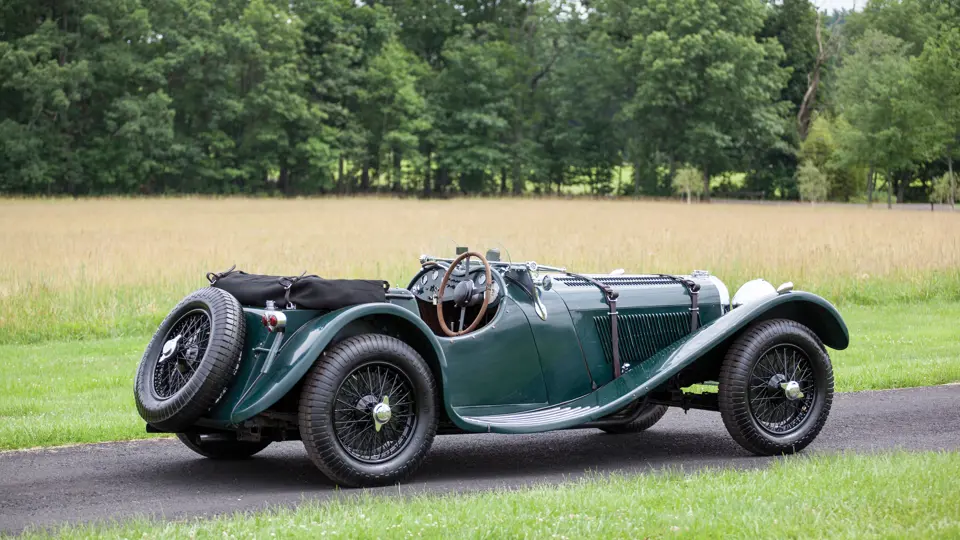
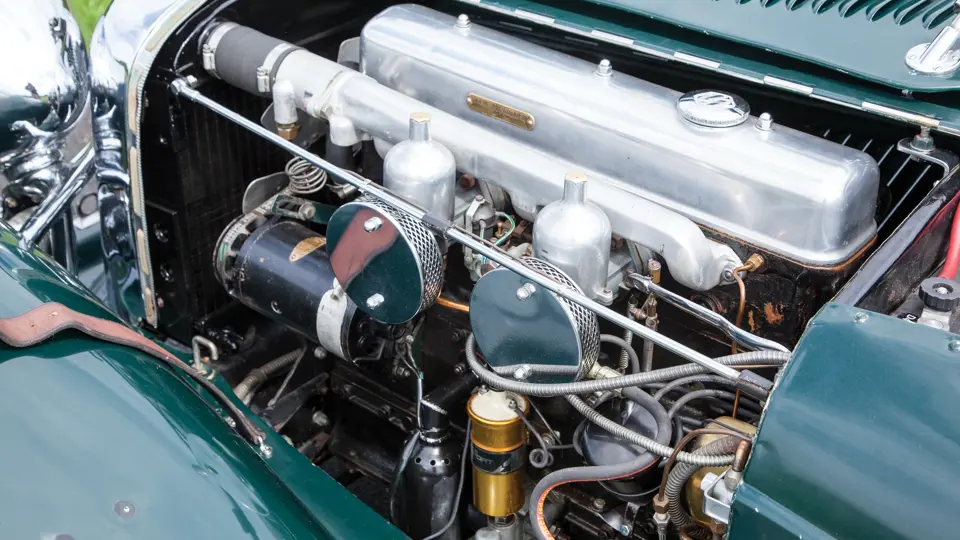


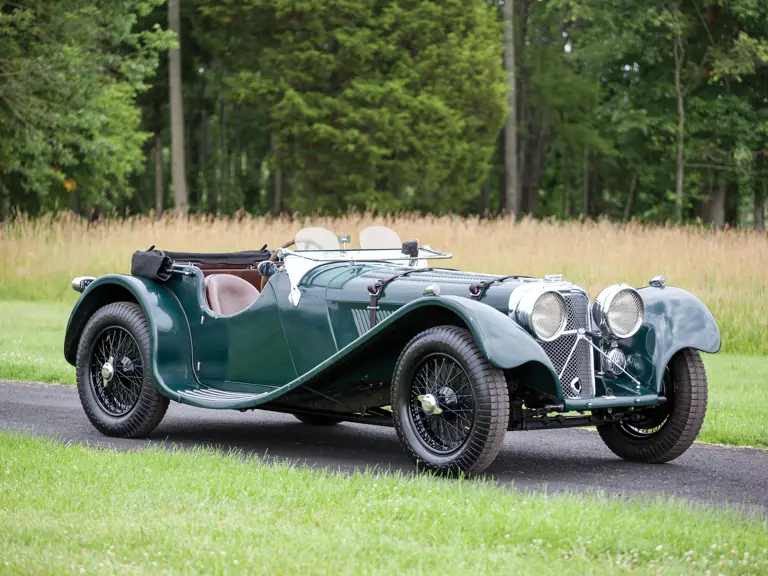
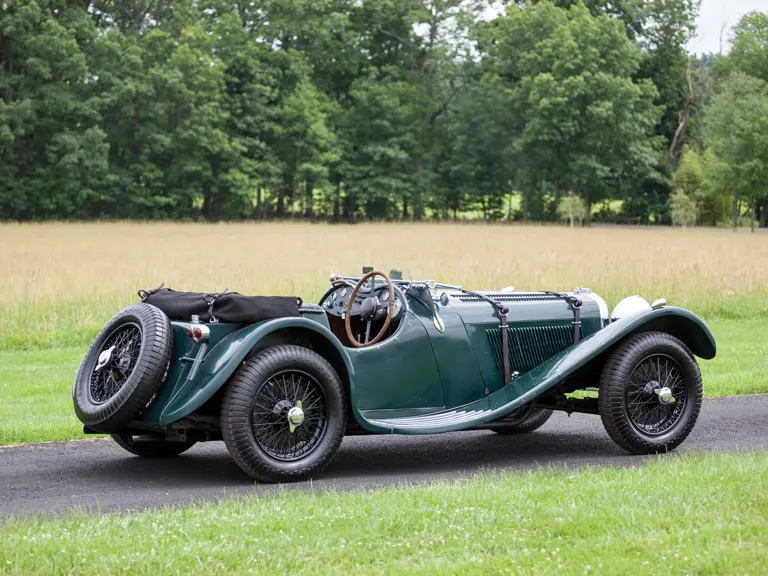

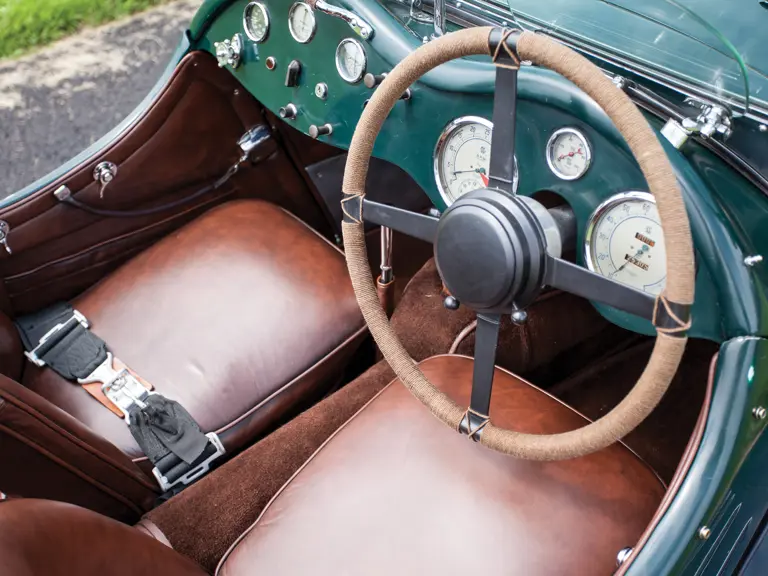
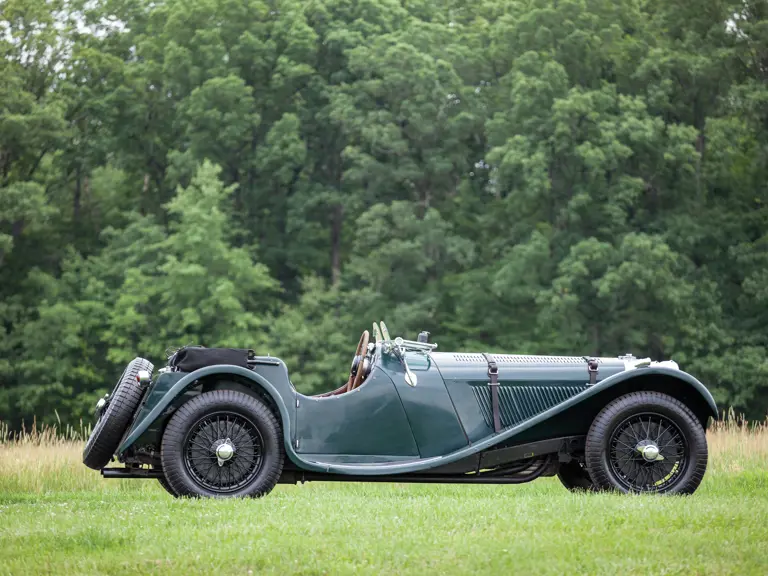
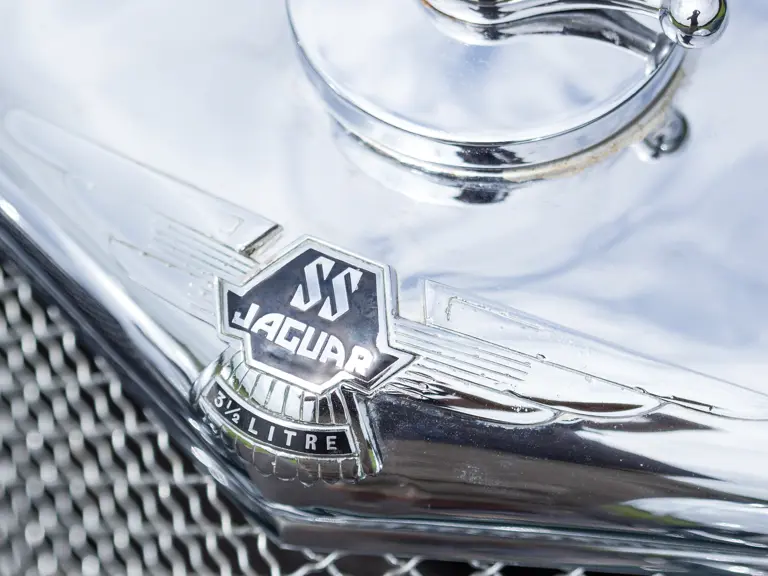
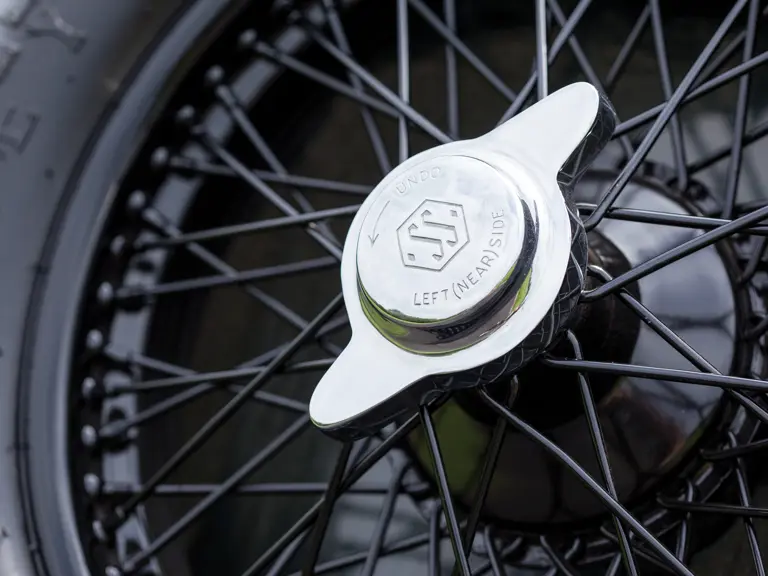

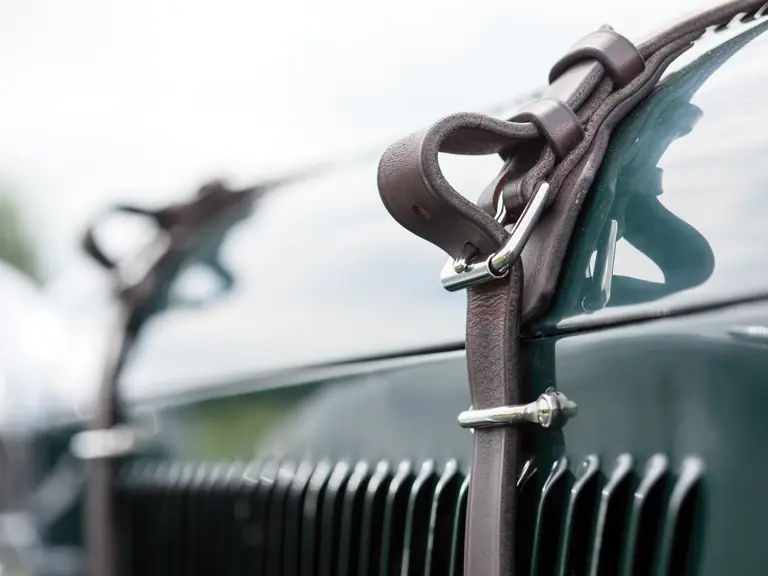

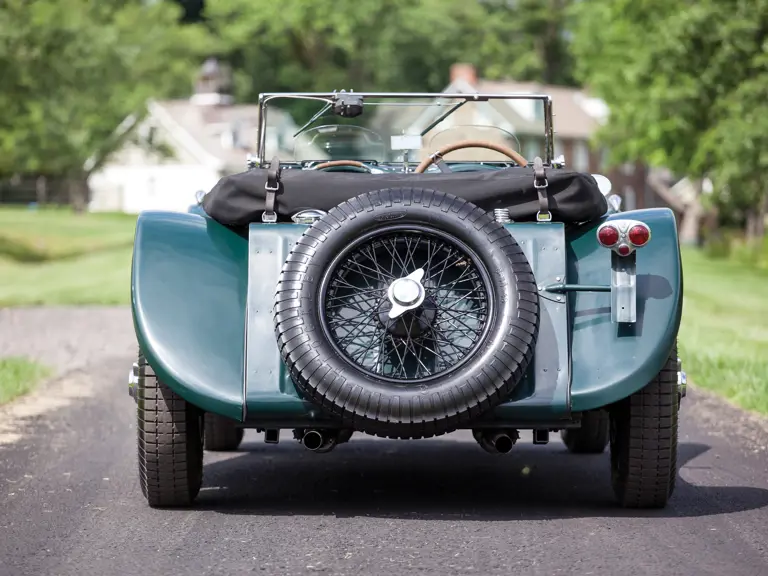
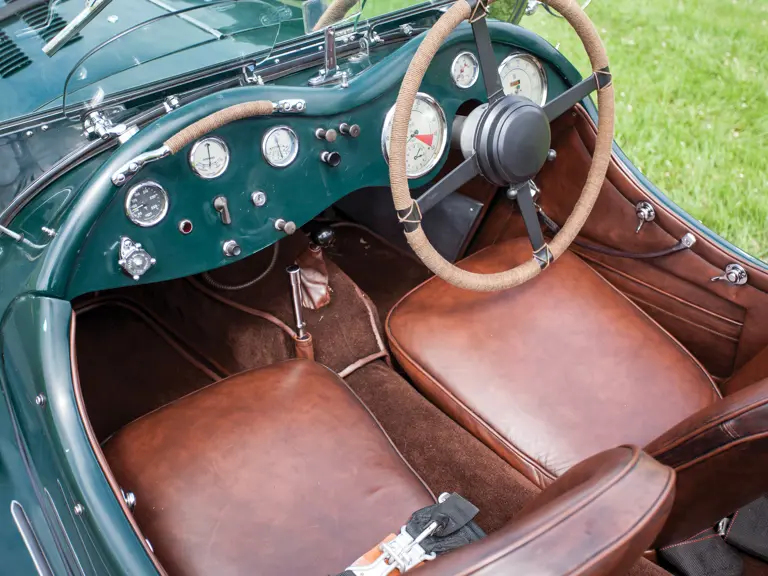


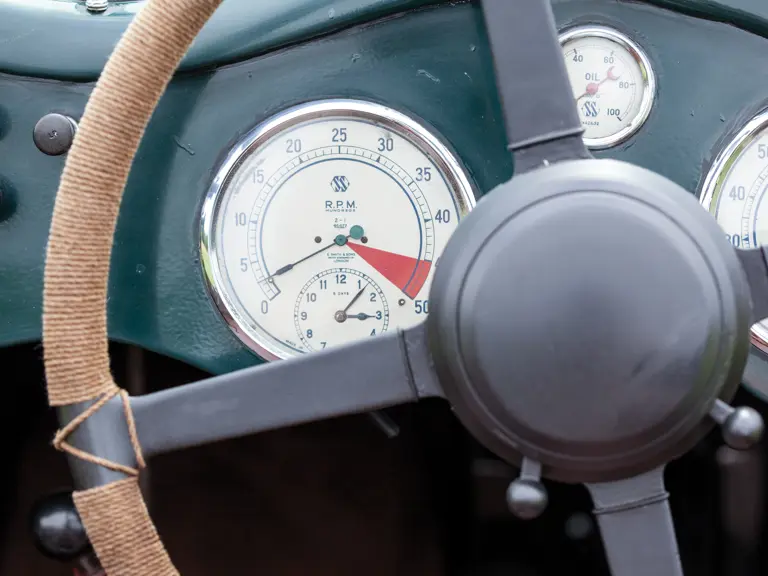
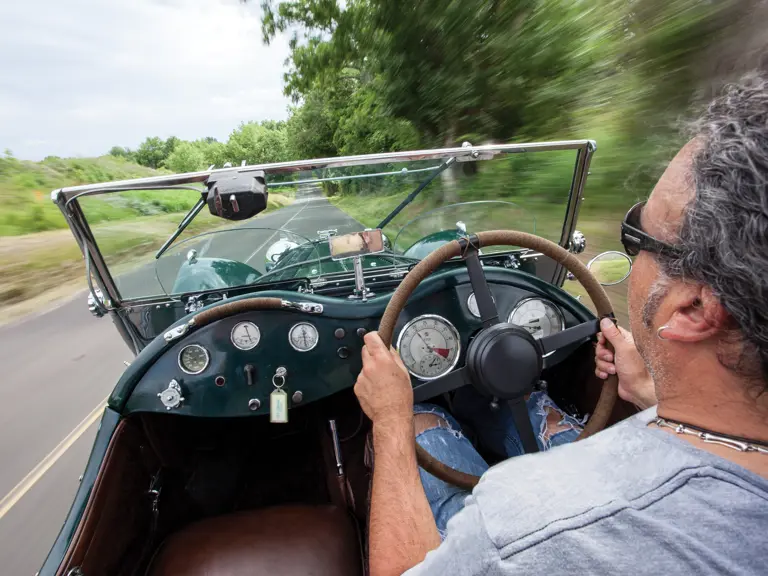

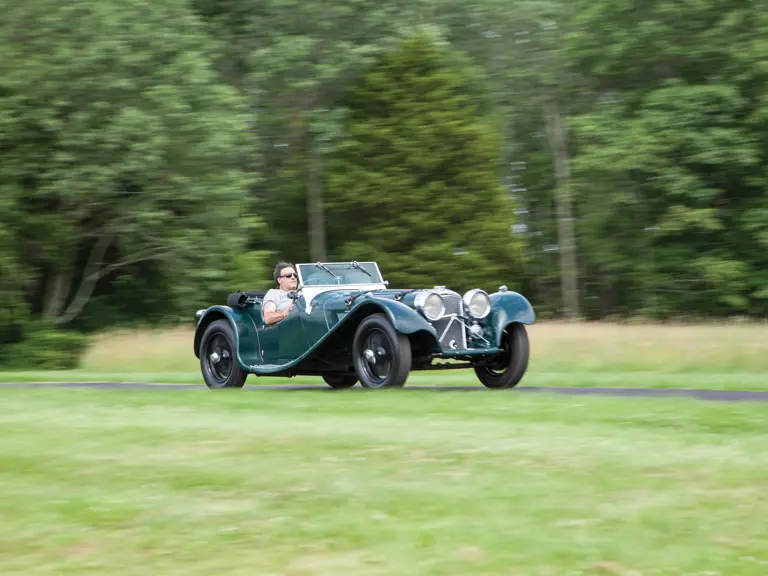
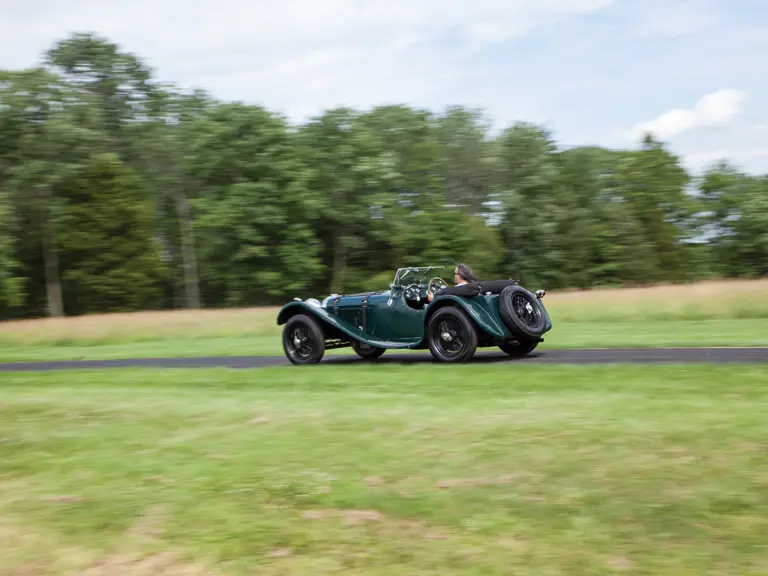

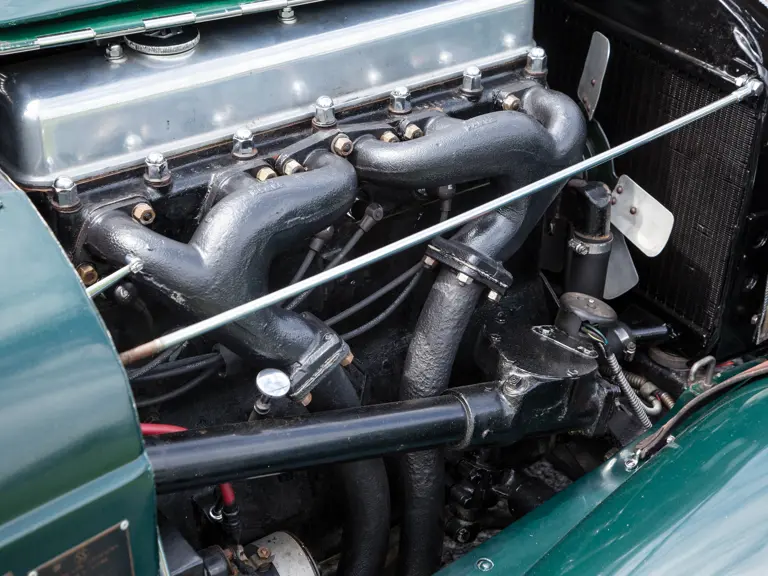

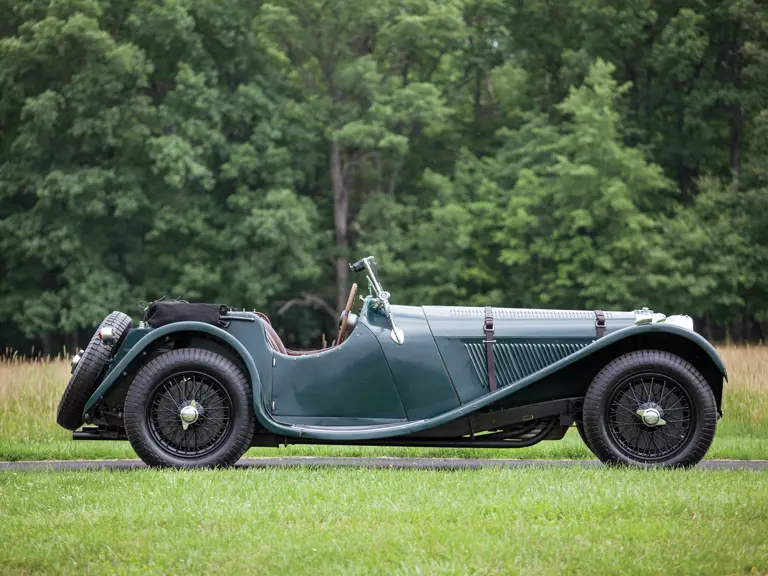
 | Monterey, California
| Monterey, California
